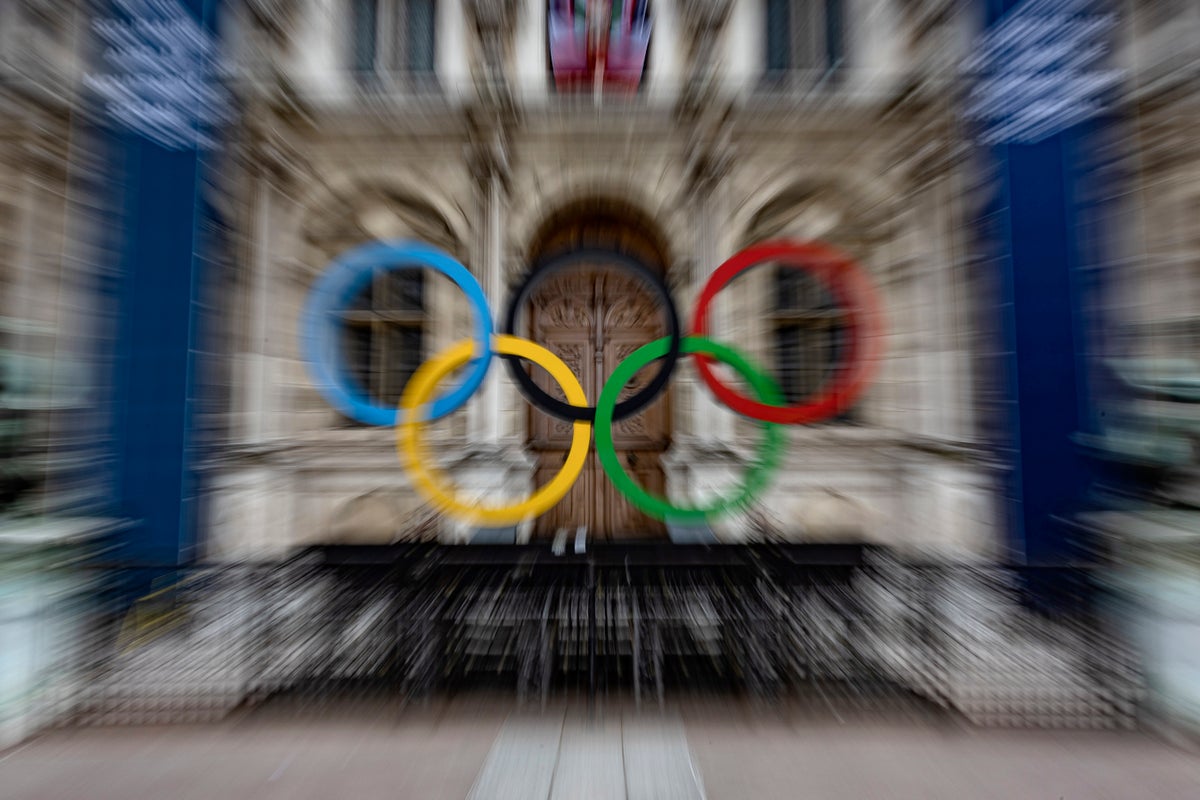
To pull off the most audacious opening ceremony in Olympic history, French organizers are now — literally — on the same page.
France's government, the organizing committee president for the 2024 Paris Games and the French capital's mayor signed an 11-page security protocol Tuesday that for the first time publicly laid out some of the gritty details of their planning to shield the unprecedented July 26 opening ceremony from the threats of terrorism, drone attacks and other risks for the massive crowds and 10,500 athletes.
A notable change is that the hundreds of thousands of spectators who will watch the open-air gala for free, spread along a 6-kilometer (3 1/2-mile) parade route on the River Seine, will need to pre-register for tickets. French Interior Minister Gerald Darmanin, in charge of Olympic security, had been pushing for that shift so throngs of non-paying spectators can be allocated designated spots on the river's upper embankments, separated from 100,000 other guests paying for a closer, waterside view.
In the face of experts' misgivings about the size and complexity of the security operation, Darmanin, organizing committee president Tony Estanguet and Paris Mayor Anne Hidalgo spoke at a news conference in defense of France's decision to use the center of the city as the venue for the extravaganza, ditching the safety of a traditional stadium setting for the first time.
It promises great television if all goes well, showcasing iconic monuments and the Seine that is being cleaned up for Olympic swimming. But the unique logistical and security requirements could backfire spectacularly in front of a global audience for France if there are major problems.
“When France organizes the Games — the last time was 100 years ago — it does so with ambition,” Estanguet said. “It's a challenge to organize a ceremony with these conditions but, again, it's the biggest audience that France will ever have had, the most beautiful showcase. Our responsibility is to create dreams, to show how incredible this country is."
Paris' plans are gargantuan in other ways, too:
— The athletes will be paraded from east to west along the river aboard 91 boats, with 25 other craft in reserve for breakdowns or other needs. There will also be about 30 boats for security; the river could get crowded. There will be trial runs starting this July. The whole event, including the water-borne parade to the foot of the Eiffel Tower, an artistic and musical show, and the official ceremony with the lighting of the Olympic flame and attended by heads of state is expected to last about 3 1/2 hours.
— With a planned deployment of 35,000 police officers — swallowing up a sizable chunk of France’s total of 250,000 — Paris' ceremony will dwarf “Operation Golden Orb,” Britain’s huge policing operation for the coronation of King Charles III. It mobilized nearly 13,000 police officers. London’s police commissioner said it was the largest security operation that his 194-year-old Metropolitan Police force had ever led.
— In all, 30,000 officers will be mobilized on average per day during the July 26-Aug. 11 Olympics, rising to as many as 45,000 on the busiest days in the Paris region, Darmanin told senators in October. Police vacations will be canceled in June, July and early August with “very rare exceptions” and other events that would have needed policing will be postponed, he said. The minister warned of “enormous public order problems if, clearly, things go wrong.”
An acute concern in the wake of multiple attacks by the Islamic State group that killed 147 people in Paris and its surrounds in 2015 is that the show might be a target for terrorism. Bomb-carrying drones are also a worry. “It's a totally new threat,” Darmanin said.
There are also concerns about managing the massive crowds and whether organizers will be able to recruit private security guards in sufficient numbers.
“It's very ambitions and it's true that many experts have voiced opposition,” said Bertrand Cavallier, the former commander of France's national gendarmerie police training center, speaking in a phone interview. “The physical configuration is very complex."
Among other challenges, he cited a risk of spectators falling into the river or tumbling from the Seine's upper embankments onto the paying crowds below. The security protocol signed Tuesday, however, specified that there will be a gap between the spectators and the upper parapets, wide enough for security and rescue services to pass.
There is also the possibility of protests after sustained and sometimes violent demonstrations this year against pension reforms pushed by President Emmanuel Macron.
“There's a desire to present a very beautiful image of France. It's true that the Seine, Notre Dame, the Eiffel Tower and the rest are very evocative. So behind this is big publicity campaign to showcase France. And there's also a political dimension. I think President Macron wants to mark his presidency," Cavallier said. “But the risk is there.
“The idea is very seductive,” he added. “Realizing it is going to take considerable work.”
Civil liberty campaigners have also sounded the alarm that Olympic security measures risk eroding freedoms. Critics have raised privacy concerns about video surveillance technology that will be used on an experimental basis, combining cameras with artificial intelligence software to flag potential security risks such as abandoned packages or crowd surges. Authorities are adding hundreds of surveillance cameras in regions that will host Olympic events. Critics contend that intrusive, lasting security is often a toxic legacy of the Olympics.
Policing is already being ramped up. Darmanin has spoken of a campaign “of harassment, of cleaning” of crime in areas hosting Olympic sites.







